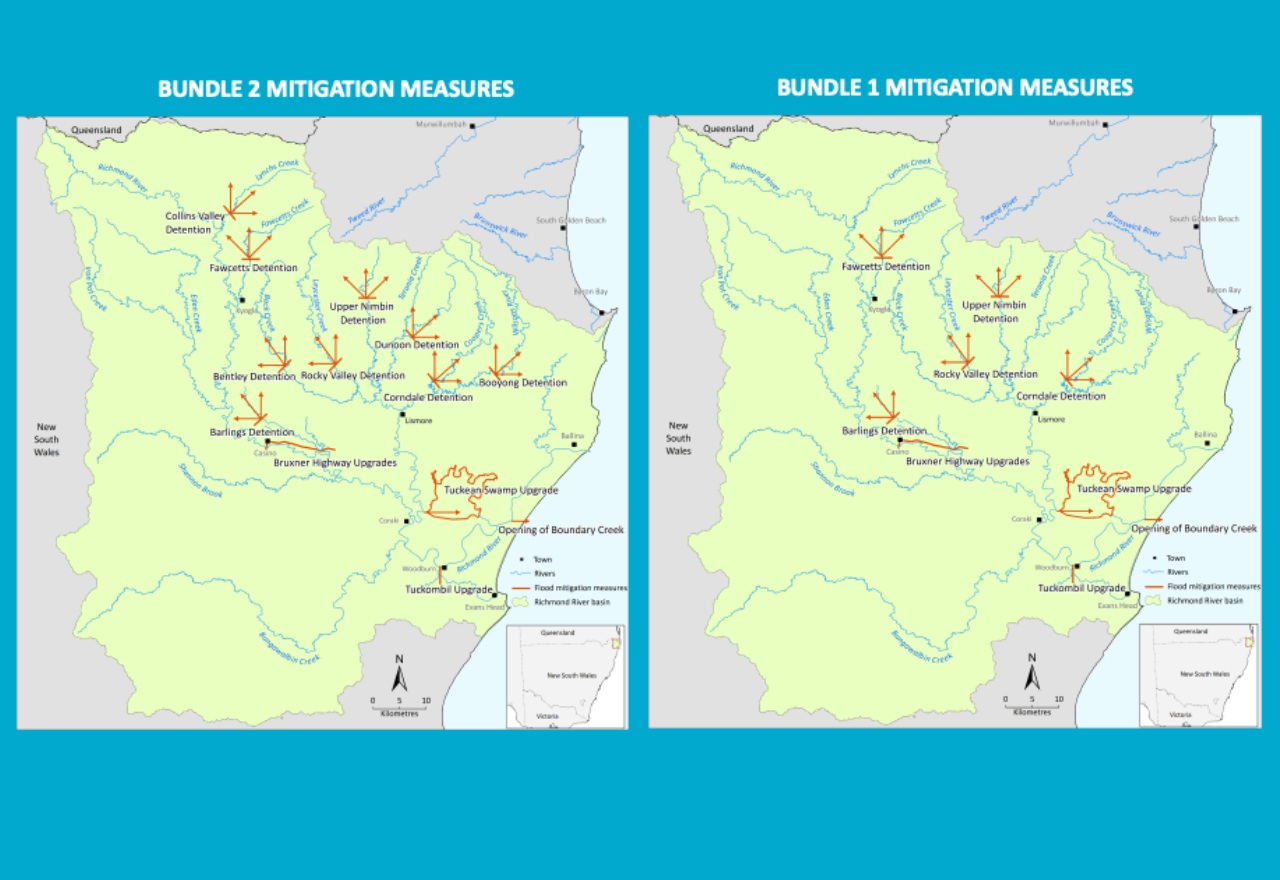CSIRO cuts jobs as alarm bells ring for research under investment
Simon Mumford
19 November 2025, 7:59 PM
 The two bundles being put through the CSIRO Richmond River Catchment Flood Mitigation model
The two bundles being put through the CSIRO Richmond River Catchment Flood Mitigation modelThe CSIRO, Australia's national science agency, announced it is cutting up to 350 jobs on Tuesday.
The CSIRO is well known in Lismore and the Northern Rivers for its work on building a world-class Richmond River Catchment Flood Mitigation model, which is due for release on June 30 next year.
Like many businesses, the CSIRO says it needs to make changes to ensure a sustainable and enduring national science agency.
CSIRO Chief Executive Dr Doug Hilton said the organisation needs to adapt to achieve the right balance of focused research, supported by aligned capability, quality research infrastructure and safe and sustainable sites – where CSIRO researchers can make discoveries and apply them to change the world.
“CSIRO’s reason for being is to deliver the greatest possible impact for the nation through our research,” Dr Hilton said.
“As today’s stewards of CSIRO, we have a responsibility to make decisions that ensure we can continue to deliver science that improves the lives of all Australians for generations to come.
“We must set up CSIRO for the decades ahead with a sharpened research focus that capitalises on our unique strengths, allows us to concentrate on the profound challenges we face as a nation and deliver solutions at scale.”
Following a comprehensive 18-month review of its research portfolio, CSIRO has identified key focus areas to bring a renewed emphasis on inventing and deploying technological solutions to tackle national problems.
These include:
- Supporting a clean, affordable energy transition, including transforming our critical minerals to materials
- Addressing the pressing problem of climate change, with a renewed focus on adaptation and resilience
- Applying advanced technologies (including AI, quantum, sensing, robotics and manufacturing) to drive the next wave of innovation in core Australian industries
- Increasing the productivity and resilience of Australian farms by focusing on the deployment of technological solutions
- Mitigating and eradicating biosecurity threats to Australian industries, landscapes and communities
- Applying disruptive science and engineering to unlock the unknown and solve unanswered questions.
In response, Universities Australia sounded a warning that the announced restructure and workforce reduction at the CSIRO underscore the very real risks of chronic under-funding in the nation’s research system.
“When our national flagship science agency is forced to shed hundreds of jobs and narrow its research focus, it sends a clear message: Australia’s research engine is running short of fuel,” Chief Executive Officer Luke Sheehy said.
“This isn’t just a CSIRO issue – it’s a warning light for the entire research ecosystem.
“Australia is being outspent and outpaced by the world, Australia currently invests 1.69 per cent of GDP in R&D – well below the OECD average of 2.7 per cent and far behind innovation leaders like South Korea and Germany who invest over 3 per cent.
“If we continue to under-invest, we will lose the talent, infrastructure and breakthroughs that drive jobs, national security and technological strength.
“Research is not a cost; it is critical national infrastructure.
“Whether it’s medical breakthroughs, clean energy technologies, defence capability, cybersecurity or agriculture, research is the backbone of national strength.
“Australia risks falling behind at a time we need to be moving faster.
“The government’s Strategic Examination of R&D is a crucial opportunity to fix these structural problems, but it must lead to real reform, not another layer of complexity,” Mr Sheehy said.
Universities Australia is calling for urgent action to:
- lift investment to match global competitors or at least to the OECD average
- simplify and coordinate the research system, which is currently spread across 150 programs and 14 government portfolios
- develop a whole-of-government research workforce strategy
- support better collaboration with industry, and
- support a coordinated approach to international collaboration, including a commitment to join Horizon Europe.
“Australia doesn’t lack talent or ideas – we lack a system and investment level that match our ambition. This is the moment to fix that,” Mr Sheehy said.